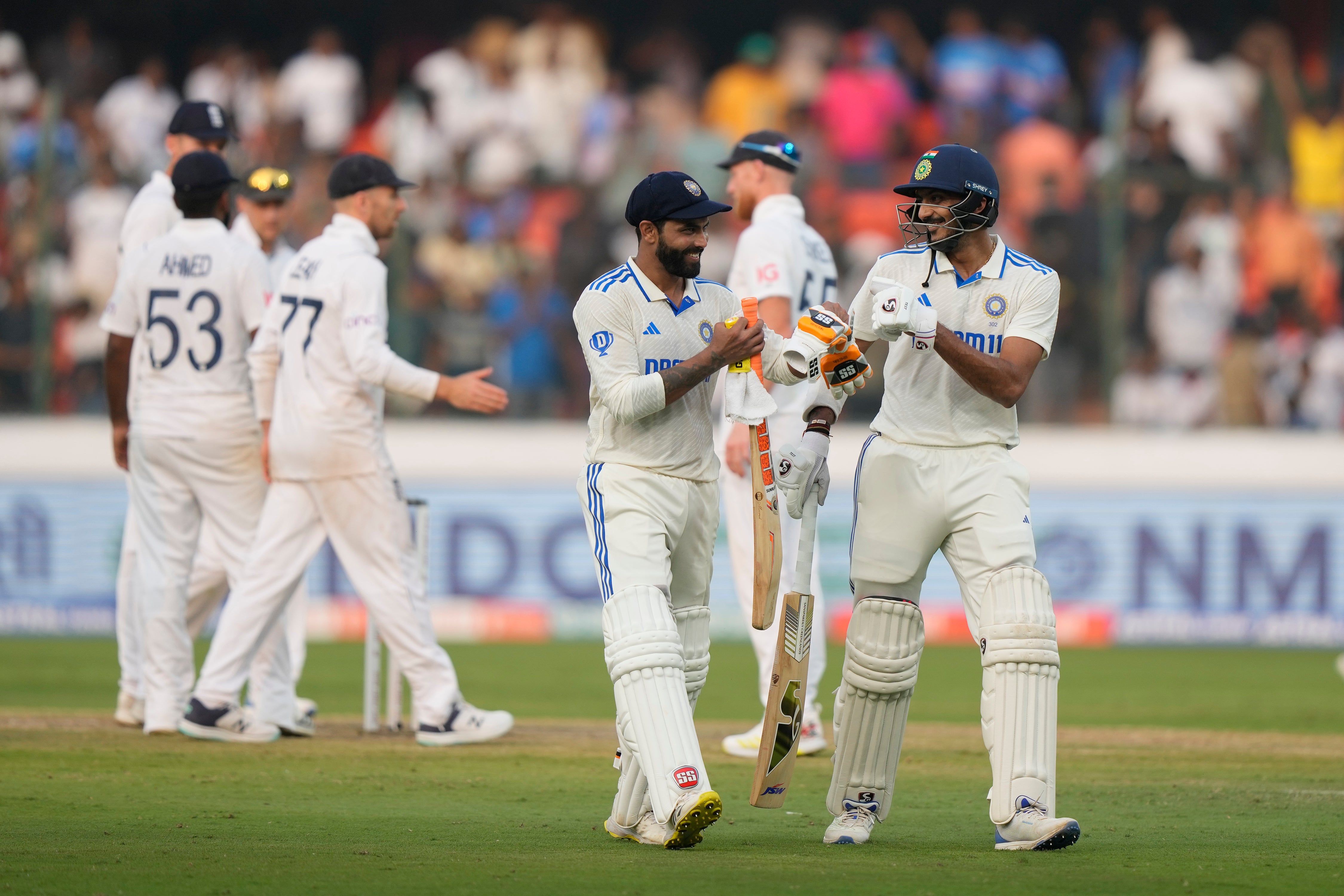Indian dominance exposes the weaknesses of England’s spin attack
England face an uphill battle to remain in contention for the first Test against India, who lead by 175 runs

Your support helps us to tell the story
From reproductive rights to climate change to Big Tech, The Independent is on the ground when the story is developing. Whether it's investigating the financials of Elon Musk's pro-Trump PAC or producing our latest documentary, 'The A Word', which shines a light on the American women fighting for reproductive rights, we know how important it is to parse out the facts from the messaging.
At such a critical moment in US history, we need reporters on the ground. Your donation allows us to keep sending journalists to speak to both sides of the story.
The Independent is trusted by Americans across the entire political spectrum. And unlike many other quality news outlets, we choose not to lock Americans out of our reporting and analysis with paywalls. We believe quality journalism should be available to everyone, paid for by those who can afford it.
Your support makes all the difference.England toiled on the second day of the first Test match in Hyderabad as India dominated. The hosts built a healthy lead of 175 as they reached 421 for seven at the close of play, and as far as the visitors were concerned, it could have been much worse.
On the first day, despite it being probably the best batting conditions of the Test, England were made to work hard for their runs while Axar Patel, Ravichandran Ashwin and Ravindra Jadeja wore them down with their skill on the red soil pitch.
When it came to their turn to bowl, England’s spinners’ gulf in quality compared to their opponents was laid bare. Ben Stokes’s side were then further hampered when number one spinner Jack Leach sustained a knock to his knee and was limited to short bursts. In fact, he managed just 16 overs in the day.
Joe Root stepped up and was arguably England’s best performer but the inexperienced duo of Rehan Ahmed and Tom Hartley were both expensive.
Hartley and Root both claimed two wickets apiece but England’s breakthroughs largely came because of decisions made by the Indian batters, rather than bowling prowess.

KL Rahul, who was dropped on nought in the first over of the day by an uncharacteristic error from Ben Foakes, went on to make 86 before he mistimed the ball straight to deep midwicket. Shreyas Iyer had played an almost identical shot not long before and suffered the same fate.
Ashwin, who came in ahead of Axar Patel at number eight, was run out in a complete mix-up with Jadeja, who overturned two lbw decisions to remain at the crease, finishing the day unbeaten on 81.
But ultimately the shortcomings were evident. England’s spinners lack the experience and skill of the Indian attack, and it could make for a long series.
Some problems were those of their own making however, and Ben Stokes might be more cautious next time with his reviews, having used all three within the first 14 overs on the first day, leaving nothing for the rest of the innings.

KL Rahul led the charge for India on day two, taking up Virat Kohli’s position at number four after the talisman dropped out of the first two Tests for personal reasons.
Although he could have been out second ball and needed some luck dealing with a bouncer barrage from Mark Wood, he drove Hartley down the ground and took a liking to Ahmed’s leg spin on his way to 86.
But it was the Indian partnerships that really turned the screw on England. Shubman Gill made 23, Shreyas Iyer 35, and then Jadeja stepped up to form a solid partnership with Srikar Bharat (41) and then Axar Patel, who finished unbeaten on 35.
On the third day, England have three more wickets to take before they will have to bat again on a more difficult pitch, and at least 175 runs behind. Under the leadership of Stokes and Brendon McCullum, they will undoubtedly remain positive but it is already looking like a difficult task.
Join our commenting forum
Join thought-provoking conversations, follow other Independent readers and see their replies
Comments